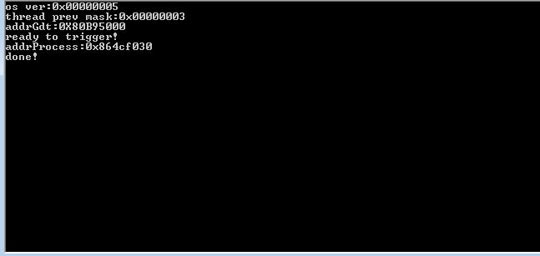PDF_CVE20184990.THEAFAH
HEUR:Trojan.PDF.Agent.gen (Kaspersky) ; Exploit:PDF/Bedobedobe.A [non_writable_container] (Microsoft) ; Trojan.Pidief (Norton)
Windows


Threat Type: Exploit
Destructiveness: No
Encrypted: Yes
In the wild: Yes
OVERVIEW
Downloaded from the Internet, Dropped by other malware, Propagates via software vulnerabilities
This Exploit arrives on a system as a file dropped by other malware or as a file downloaded unknowingly by users when visiting malicious sites.
It takes advantage of certain vulnerabilities.
TECHNICAL DETAILS
82,344 bytes
No
15 May 2018
Executes files, Drops files
Arrival Details
This Exploit arrives on a system as a file dropped by other malware or as a file downloaded unknowingly by users when visiting malicious sites.
Installation
This Exploit drops the following files:
- c:\Users\All Users\Start Menu\Programs\Startup\one.vbs
Other Details
This Exploit does the following:
- If executed, one.vbs will drop and execute the following copy of calc.exe:
- C:\Users\Public\Documents\OneNote.exe
It takes advantage of the following vulnerabilities:
NOTES:
This is the Trend Micro detection for the proof of concept (PoC) sample of CVE-2018-4990 and CVE-2018-8120.
Displays the following after execution:

SOLUTION
9.850
14.254.04
16 May 2018
14.255.00
17 May 2018
Step 1
Before doing any scans, Windows XP, Windows Vista, and Windows 7 users must disable System Restore to allow full scanning of their computers.
Step 2
Note that not all files, folders, and registry keys and entries are installed on your computer during this malware's/spyware's/grayware's execution. This may be due to incomplete installation or other operating system conditions. If you do not find the same files/folders/registry information, please proceed to the next step.
Step 3
Identify and terminate files detected as PDF_CVE20184990.THEAFAH
- Windows Task Manager may not display all running processes. In this case, please use a third-party process viewer, preferably Process Explorer, to terminate the malware/grayware/spyware file. You may download the said tool here.
- If the detected file is displayed in either Windows Task Manager or Process Explorer but you cannot delete it, restart your computer in safe mode. To do this, refer to this link for the complete steps.
- If the detected file is not displayed in either Windows Task Manager or Process Explorer, continue doing the next steps.
Step 4
Search and delete this file
- c:\Users\All Users\Start Menu\Programs\Startup\one.vbs
- C:\Users\Public\Documents\OneNote.exe
Step 5
Scan your computer with your Trend Micro product to delete files detected as PDF_CVE20184990.THEAFAH. If the detected files have already been cleaned, deleted, or quarantined by your Trend Micro product, no further step is required. You may opt to simply delete the quarantined files. Please check the following Trend Micro Support pages for more information:
Did this description help? Tell us how we did.